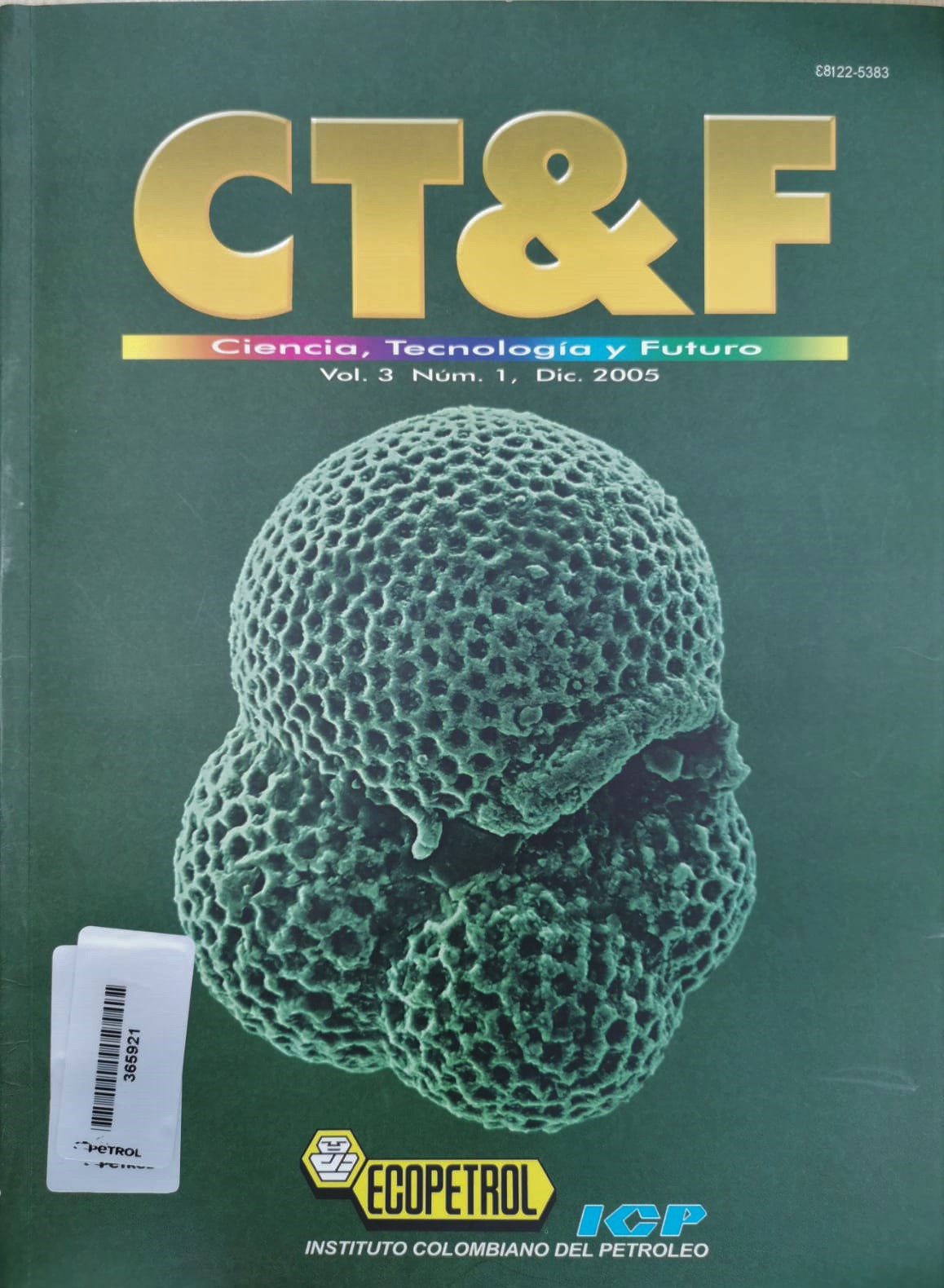Aplication of genetics algorithms as an optimization tool in optimizing infill wells and the development of channels in fluvial deposit reservoirs
Abstract
Optimization of the exploitation of an oil field requires implementing the most advanced techniques aimed at the increase of its production. Among them, drilling new development wells (infill wells) stands out. Defining the most adequate location for such wells is a complex process, due to diverse geological characteristics of the reservoir, and to the high uncertainty associated to the spatial distribution of the hydrocarbon storing flow units. This article presents the development of an alternative and innovative simulation alternative, which allows locating flow channels by means of integrating geo-statistical modeling and evolutional computation. The architecture of the geological model is defined by variables which are coded in a binary system, which represent the chromosomes of the genetic algorithm, and represent the characteristic facies of a reservoir with fluvial origin (channel sand, point bars, natural levee, crevasse splay, and floodplain shale). As the product of the genetic algorithm optimization, a facies model is obtained, in which the best channel layout is obtained within the reservoir, allowing better knowledge of the spatial distribution of flow units and the hydrocarbon accumulation zones. The correct implementation of this simulation tool facilitates the location of the most adequate sites for the implementation of infill well drilling, new zone perforating, re - perforating programs and enhanced oil recovery process, carrying to maximization of hydrocarbon recovery factor in mature reservoirs.
References
Baeck, Thomas and Fogel, David B., 1997. "Handbook of evolutionary computation". Oxford, NY. https://doi.org/10.1201/9780367802486
Clemensten, R., Hurst, A. R., Knarud, R., and More, H., 1990. "A computer program for evaluation of fluvial reservoirs". Buller et al. editors, North Sea Oil and Gas Reservoirs II, Graham and Trotman, London. https://doi.org/10.1007/978-94-009-0791-1_32
Deutsch, C. V. and Wang, L., 1996. "Hierarchical Object-Based Geostatistical Modeling of Fluvial Reservoirs". SPE Annual Technical Conference and Exhibition, Denver, Colorado, USA, SPE 36514. https://doi.org/10.2118/36514-MS
Deutsch, C. V. and Tran, T. T., 2002. "FLUVSIM: A Program for Object-Based Stochastic Modelling of Fluvial Depositional Systems". Computers & Geosciences, 28(3): 525-535. https://doi.org/10.1016/S0098-3004(01)00075-9
Goldberg, David, 1989."Genetic Algorithms in Search, Optimization, and Machine Learning". Addison-Wesley.
González, S. y Idrobo, E. A., 2004. "Caracterización dinámica de yacimientos estratigráficamente complejos usando algoritmos genéticos". CT&F-Ciencia, Tecnología y Futuro, 2 (5): 23 - 51.
Haldorsen, H. H. and Lake, L. W., 1984. "A new approach to shale management in field - scale models". SPE J., 447 - 457. https://doi.org/10.2118/10976-PA
Haldorsen, H. H. and Chang, D. M., 1986. "Notes on stochastic shale: from outcrop to simulation model". Reservoir Characterization. L. W. and H. B. Carrol, Editors, Academic Press, 445 - 485. https://doi.org/10.1016/B978-0-12-434065-7.50020-4
Idrobo, E. A., Choudhary, M. K. and Datta-Gupta, A., 2000. "Swept Volume Calculations and Ranking of Geostatistical Reservoir Models Using Streamline Simulation". SPE/AAPG Western Regional Meeting, Long Beach, California, USA, SPE 62557. https://doi.org/10.2118/62557-MS
Miall, A. D., 1985. "Principles Of Sedimentary Basin Analysis". Springer-Verlag New York Eds. https://doi.org/10.1007/978-1-4757-4232-9
Miall, A. D., 1996. "The Geology Of Fluvial Deposits". Springer-Verlag Berlin Heidelberg Eds. Italia.
Mitchell, Melanie. 1996. "An Introduction to Genetic Algorithms". MIT Press.
Romero, C. E., Carter J. N., Gringarten A. C., and Zimmerman, R. W., 2000. "A Modified Genetic Algorithm For Reservoir Characterization". SPE Int. Gas Conf. Beijing, 7-1, Soc. Pet. Eng., Dallas, SPE 64765. https://doi.org/10.2118/64765-MS
Shmaryan, L. E. and Deutsch, C. V., 1999. "Object-based modeling of Fluvial/ Deepwater Reservoirs with fast data conditioning: methodology and case studies". SPE Annual Technical Conference and Exhibition, Houston, Texas, SPE 56821. https://doi.org/10.2118/56821-MS
Stoyan, D., Kendall, W. S., and Mecke, J., 1987. "Stochastic Geometry and its Applications". John Willey and Sons, Inc., N.Y. https://doi.org/10.1515/9783112485446-014
Downloads
Copyright (c) 2005 Creative Commons Reconocimiento-NoComercial-CompartirIgual 4.0.

This work is licensed under a Creative Commons Attribution-NonCommercial-ShareAlike 4.0 International License.

| Article metrics | |
|---|---|
| Abstract views | |
| Galley vies | |
| PDF Views | |
| HTML views | |
| Other views | |











